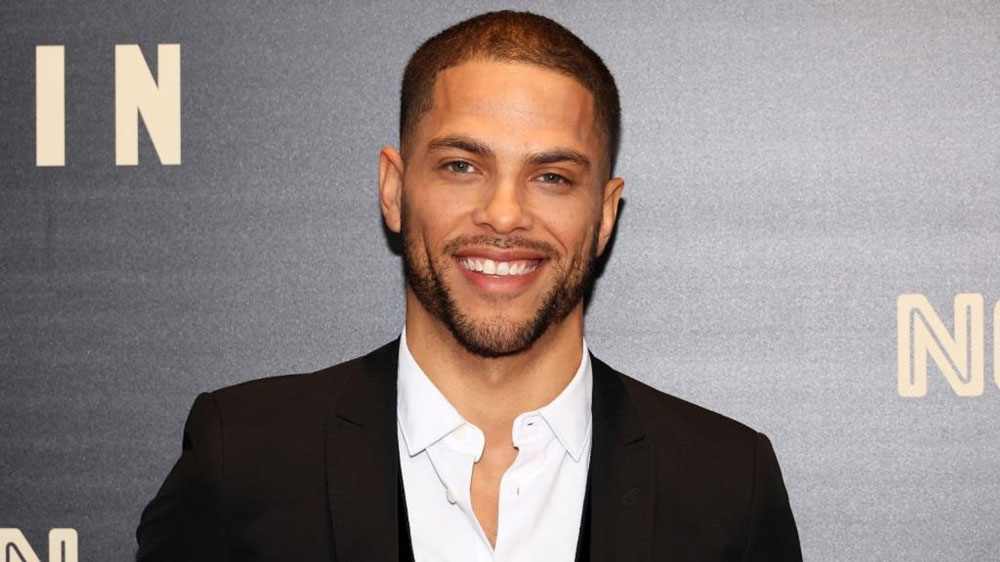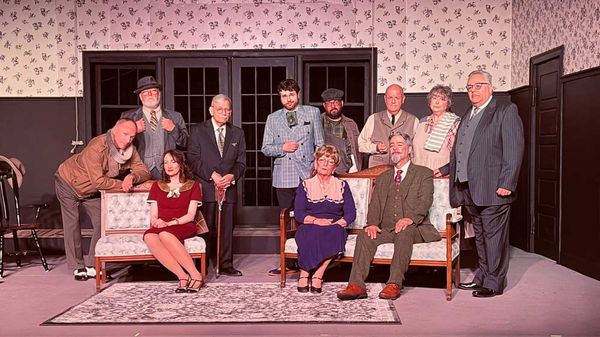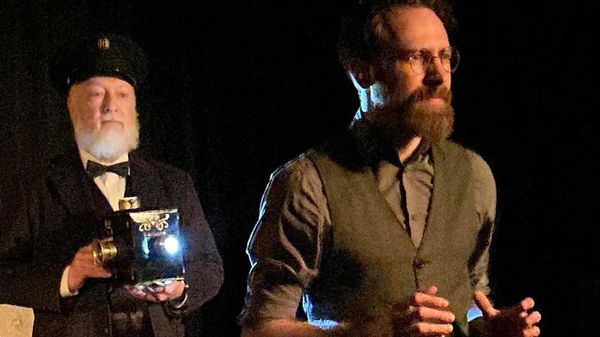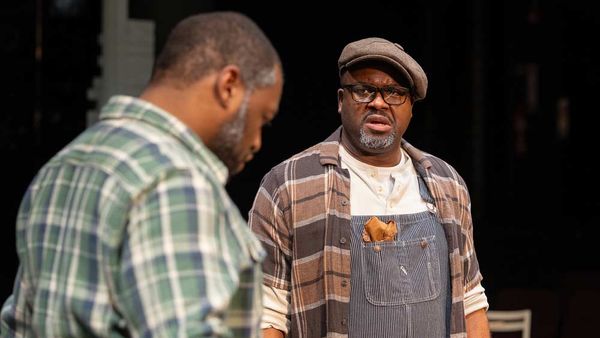December 11, 2010
Physiques, by George!
Kevin Mark Kline READ TIME: 4 MIN.
He was "The Master Painter of the Male Physique," and the long-awaited book that pays tribute is tremendous, in size and importance. For many, it will be fondly embraced nostalgia. For some, it will be an eye-opening first look at what came before the gay sexplosion. The erotic paintings of George Quaintance are campy, kitschy, culturally significant and quite beautiful. And they're all here.
The whoppingly big (11 �" x 16") art book is called, simply, Quaintance (Taschen, hardbound, $99.99). The sumptuously reproduced paintings look glorious in such large dimensions; in size and scope, Quaintance is handsome and appropriate. Its 170 pages deliver a brief but solid resume of the artist's curious life written by Reed Massengill, well-known photographer and author/editor of a number of books of gay photography. Following a long section that enlarges detailed sections of the paintings, The Complete Works are offered in chronological order, with succinct commentary by university professor and porn blogger extraordinaire Ken Furtado. It's sad that, at two to a page, the artist's entire output fills only 28 pages. If only George Quaintance had started earlier and lived longer.
He was born in 1902, to a southern family of farmers who surprisingly and wholeheartedly supported their son's artistic nature. As for GQ, he badly wanted the broader world. After high school he embarked for New York, ostensibly to study art, but where his restless nature detained his ultimate calling. He became a dancer, and toured in vaudeville. Then he was a dance instructor, and after that, improbably, a hairdresser to the stars: Lily Pons, Jeanette MacDonald. This led to providing articles and artwork to women's beauty magazines. With physique culture in its nascent days, he segued naturally to men's magazines. From smaller self-help publications, he leaped to Joe Weider's bodybuilder magazines, and quickly became art editor of Young Physique. The portraits of the stars of the day that he painted for the magazine's covers cemented his fame as the master painter of the male physique.
He moved to Los Angeles in 1947, and found an artistic home in Bob Mizer's Physique Pictorial. Its audience welcomed his increasingly homoerotic work with passion. Remember, in those days, a penis could not be shown, and nudes could not be sent through the mail. So GQ's work capitalized not just on masculine apparel (how he fetishized Levi's!), but on his subjects' longing and hunger for something obviously greater than mere male companionship. The events their glances reference promise that a once-covert sexuality will not be hidden long.
Success allowed GQ to purchase Rancho Siesta. Actually a home on two adjacent lots in a suburb of Phoenix, the pretend ranch was a place where GQ could live his cowboy western fantasy. Carefully posed photos taken at Rancho Siesta depict Quaintance's idealized version of himself, in western garb and covering his baldness with an obviously fake blond wig. They're also obviously so over-painted as to almost be paintings themselves. In the fantasy of Rancho Siesta, GQ painted his rugged cowboys and burnished Native Americans, and his work attained its artistic maturity in the mid-1950s. He died of a heart attack in 1957.
Much of GQ's work is flawed in the proportions and frequent stiffness of his subjects. But despite the flamboyance and faults of technique, Quaintance's men were Men. In being simultaneously both masculine and homosexual, the depictions were not only ahead of their time, but are among the cornerstones of modern gay art. They were certainly an inspiration for all who followed, including Tom of Finland, Rip Colt (aka Jim French), Harry Bush, and others.
Classical themes and mythology allowed GQ to display the male body. "Spartan Soldiers at the Baths," from his artistic maturity of 1956, revels in the camaraderie of a pair of well-built men; GQ dares to show a puff of pubic hair on a blond who is a stand-in for the artist. "Hercules," the last canvas GQ would complete, finds the many-headed Hydra not only standing in for the hero's penis, but fantastically elongating it.
GQ sure didn't hide his preferences in his contemporary and western themes. Cowboys in several paintings are decidedly post-coital; others lie about with their buddies in naked languor. My favorite of them all is "Shore Leave." Two sailors share a late-night drink in a cheap hotel. There's no doubt what they're up to. One pours a glass of whiskey for his buddy, who lies naked on the bed. This blond is, the commentator claims, "arguably the most voluptuous male nude Quaintance ever painted." Oh, yeah. George was such a butt man.
When male nudity was legalized in 1968 - oh, it took so long, so long - the flood of hard cocks and increasingly graphic sex made GQ's artwork seem quaint. The originals slowly disappeared, into private collections and who knows where. Of GQ's 55 completed canvases, 18 are lost. Taschen has restored 24 canvases for the book, which reproduces all 55, using perforce some period reproductions. These homoerotic love letters are unique male iconography.







